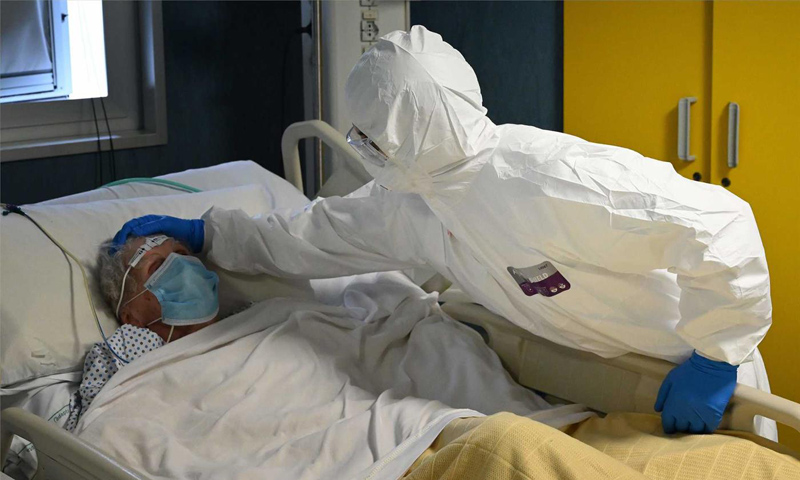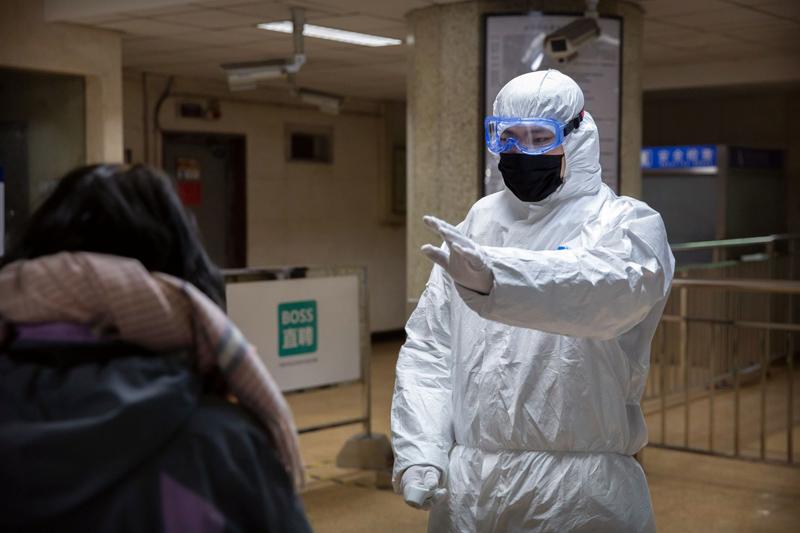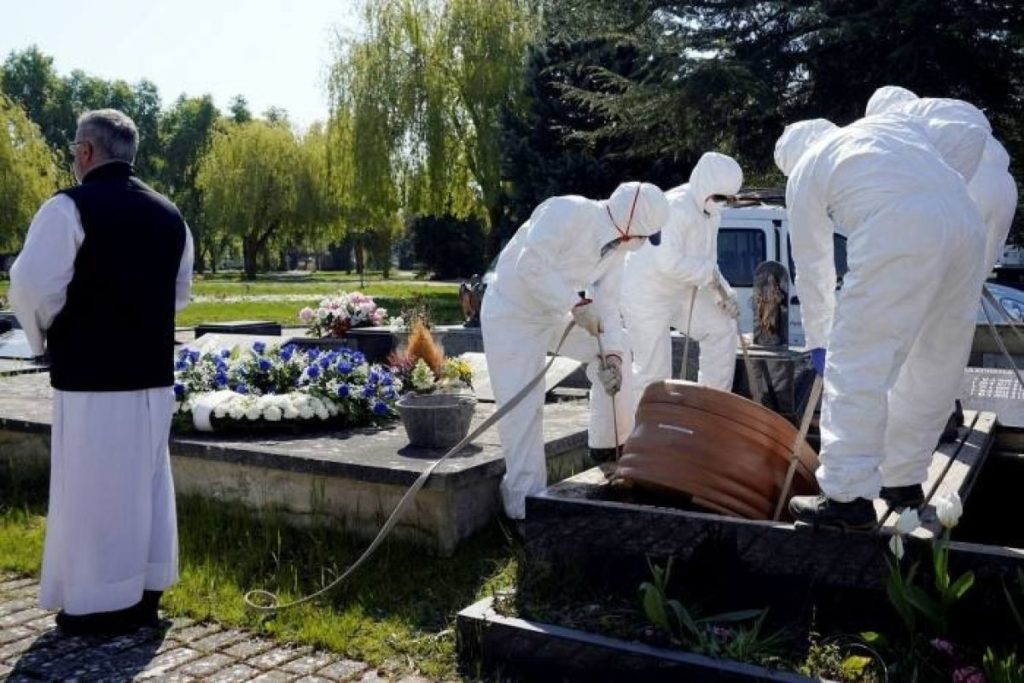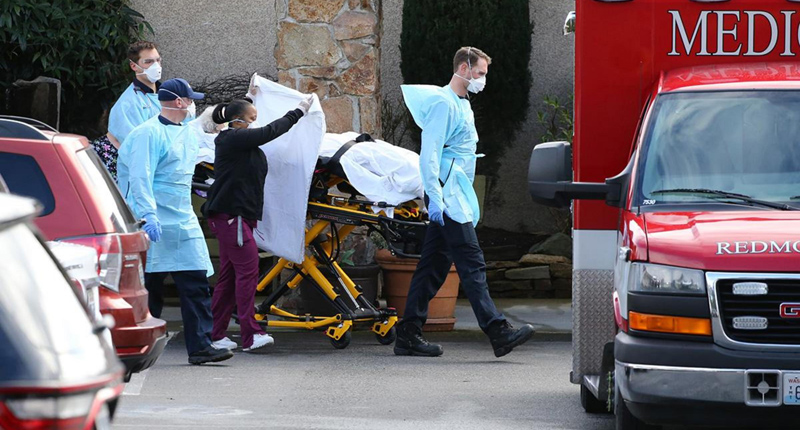COVID Upsets End of Life Care

The Issue
COVID-19 has hit organized health care particularly hard. Hospitals are bracing for a possible second influx of ICU patients as part of the pandemic. Governments struggle to define and experiment effectively with more intensive regimens of tracking and testing. Hospital administrators, critical care givers, and palliative care professionals are voicing increasing concern about how COVID-19 is threatening their ability to provide end-of-life care, a crucial service for Canadians suffering from painful and irreversible medical conditions.
Various stakeholders identify a number of “new normal” ways that COVID-19 is upsetting existing ways of dealing with treatment of the dying. The salient questions are:
- Why are we struggling to deal with these challenges?
- What can the legal system, families, health care providers, and others do to restore our values as a caring society?
Ethics and Values Challenges
1. Restriction on Hospital Visits

The risks of transmitting the coronavirus have forced us into new rhythms, changing whether and how we gather with those who are infected. In hospitals all over the country, protecting visitors and staff from the virus now depends on severely limiting in-person contact with all patients. Those restrictions:
- (a) leave patients who may already be hurting and frightened with the additional burden of being separated from their loved ones, which can be profoundly lonely and painful, and
- (b) leave families unable to properly grieve the loss of a loved one.
Hospitals today face an impossible predicament regarding visitors for terminally ill patients. On the one hand, a visitor might spread the virus within the hospital or become exposed and bring it home. On the other, depriving people of the chance to make life-and-death decisions and say goodbye in person is cruel and may even influence the choices they make.
Many hospitals seek to walk this line by allowing visitors for dying patients, with stringent restrictions. For example, the New York State department of health recommends hospitals permit one visitor for patients expected to die within 24 hours. Some hospitals allow only a single hour-long visit. Even generous policies have unintended consequences: although medical teams don’t intend to coerce families into transitioning patients to comfort-focused care before they feel ready, the fact that they cannot visit until their loved one is near death can seem like a perverse incentive. Visits by i-Pod are gaining popularity, but that’s obviously a poor second choice
Chaplains remind us that humans are social creatures; we need each other to survive and COVID-19 threatens our basic need for connection. Because the pandemic is highly contagious and spreads so easily through our contact and proximity with other humans, it turns our desire to be together into a risk factor. “Social distancing” becomes a necessary strategy for survival, but it comes with a high cost: when we can’t be in physical space together, connection is harder and isolation follows.
In health-care facilities that have the capacity, the sickest individuals who are infected with the coronavirus recuperate in isolation. Typically, patients are separated by glass walls, a fishbowl feature of ICUs that allows medical staff to observe patients’ status while minimizing physical contact with them. When staff do enter the room, they gown up in plastic, don two pairs of gloves, cover their faces with masks and shields and cover their hair, looking more like they’re heading into a nuclear waste site than into a room with a human in need of care.
2. Triage and Rationing Care in Hospitals

As an illness alone, COVID-19 is awful. It attacks the respiratory system, causing a quick onset of inflammation and mucus buildup in the lungs. The sickest go into acute respiratory distress, requiring the use of a ventilator and extensive medical treatment in an intensive care unit.
For families that opt to discontinue ventilators, the calculus becomes more brutal. Because COVID-19 is especially contagious during the removal of a breathing tube, many hospitals prohibit visitors during this procedure. If a hospital allows just one visit, families must choose between seeing their loved one before the tube is removed, while she is guaranteed to be alive, and waiting until after—with the uncertain hope of witnessing her final moments.
Science is notoriously inaccurate at predicting when patients will die. When visits are allowed only for an hour, it may be impossible to time a visit with the moment of death. Even for families that are miraculously present when a patient dies, the experience is drastically altered. Before COVID-19, patients sometimes died surrounded by family members, who might have found comfort in physical contact. Now, one or two people grieve alone, separated by gloves and gowns.
Medical teams have made impressive efforts to help families spend time together using technology. And many staff risk their own well-being to linger in hospital rooms, holding hands and smoothing brows, filling in for families that can’t be there. Still, critical care physicians cannot underestimate the distress that these policies create for health-care workers, who must weigh the trauma of enforcing limitations on end-of-life companionship against the fear that every exception exposes them to danger.
By the time this pandemic ends, hundreds of thousands will have died. Restricting the number of people they had contact with in their final days will save hundreds of thousands more. The value of those lives is incalculable, but many of the saved will still be suffering. We are only starting to understand the reverberations of patients’ isolated deaths and the complicated grief we will be processing for years to come. The costs in terms of long-term trauma and PTSD counselling for essential health care workers is staggering.
3. Right to Death with Dignity

Medical assistance in dying (MAiD) is available to Canadians over the age of 18 who have an illness, disease or disability that is serious and incurable. The disease must be in an “advanced state of irreversible decline in capability,” (that is, you might lose the capacity to consent)” and cause “intolerable” physical and psychological suffering, according to the advocacy group Dying with Dignity, a charity that advocates for end-of-life rights including assisted dying. MAiD can be provided by both doctors and nurse practitioners.
Amid rapid changes being made in hospitals and long-term care facilities across the country, access to medical assistance in dying (MAID) has become uncertain. Hospitals in two Ontario regions — including Hamilton Health Sciences and the Champlain Local Health Integration Network –temporarily suspended assisted-dying services so health-care staff could focus on pandemic efforts. Suddenly and ironically, those with grievous and irremediable medical conditions seeking to end their life worry they may no longer have access as health-care resources dwindle. Where appropriate, medical death referrals in certain regions are being sent to MAiD providers within the community, for patients who are still at home or can be discharged from hospital.
Among the difficult decisions health regions across the country are now weighing: whether to halt some or all MAiD-related in-patient or community services, either to stop the spread of COVID-19, to preserve health-care resources, or both. According to one physician, “Those of us that are still doing it are trying to cobble it together and be as safe as we can, for ourselves as well as for the patients and their families while at the same time providing this service, because we think it is necessary.”
If providing medical assistance in dying in hospitals is difficult, physicians’ trying to offer MAiD at homes of patients is even worse. Most typically lack personal protective equipment (PPE). “Am I expected to go in and out of people’s homes at this point to do assessment and provisions of MAiD? How safe is that, and how can I do that in a safe way while still keeping their needs at the forefront? We’re not really well equipped to go into the community or even to go into the hospitals, because we don’t have the gear.”
Among other pressing concerns for end-of-life providers: the impact of physical distancing on requirements earlier in the MAiD process. For example, Canadian law requires two independent witnesses to watch as a patient signs a request for MAiD. In a letter sent to all Canadian medical colleges Thursday, CAMAP (Canadian Association of MAiD Assessors and Providers) called on regulatory bodies to “urgently consider” modifications that would still allow patients seeking MAiD to apply for it while respecting social-distancing requirements. That includes the recommendation that witnesses be allowed to “watch virtually,” via Skype or Zoom, for example, while a patient reads and signs the required forms,” the letter states.
“We strongly urge that virtual witnessing of MAiD request forms be explicitly allowed and encouraged whenever possible,” the letter says. British Columbia’s College of Physicians and Surgeons has already made such changes to MAiD practices to account for the COVID-19 pandemic, including letting assessments of the patient be done by telemedicine. “We are encouraging provinces to really think about how they can continue to support Canadians looking for a MAiD solution during the crisis,” Long said.
Legal and Moral Challenges
4. End to Funerals

Pre-COVID, funerals were a public occasion to celebrate a person’s life, surrounded by friends and family. There was a sense of closure, or release, or a finite ceremonial end to life. With COVID new normalcy, a large in-person funeral is no longer possible.
5. Nursing Homes and Long Term Care Facilities

If somebody was living in an assisted living or a long term care facility, their family may not have seen them for weeks. Particularly when someone is dying, it feels tremendously important that their loved ones are able to bear witness to their passing and to say goodbye. Today, physicians and nurses (as well as other personal-service support workers) venturing into homes and long-term care facilities are rightfully afraid for their own safety — and beyond that, about becoming vectors for the disease. Certain itinerant physicians say that this a situation unlike one we’ve ever faced in Canada before. There are ethical concerns around physical distancing, because MAiD providers follow all COVID-19 social-distancing rules. One professional lamented, “We’re talking about not touching the patient, not having their families around, not allowing their loved ones into the facility to say ‘goodbye’ to them. That’s a hard pill to swallow.”
Conclusion
COVID-19 is very isolating, and ferocious, both physically and psychologically. It detracts from a patient’s sense of meaning and their connection to others. The virus upsets many families, threatens traditional ways that decisions about dying are made, and exacerbates already gut wrenching challenges to traditional delivery of palliative care and rationing. Regrettably, if COVID indeed makes critical care more difficult, in the ways touched on in this piece, it isn’t clear what should be the public policy solution or conclusion. There appears to be a leadership vacuum. At present, in the public good, it isn’t clear which stakeholder if anyone – physicians, governments, public health regulators, or other– has the keys or power to give us more comfort that death can be made more dignified.
Further Reading
CTV News: Planning end-of-life care? Here’s what to consider during COVID-19:
https://www.ctvnews.ca/health/coronavirus/planning-end-of-life-care-here-s-what-to-consider-during-covid-19-1.4909016
The Star – COVID-19 crisis has medical assistance in dying under strain:
https://www.thestar.com/news/canada/2020/03/29/healthcare-providers-concerned-about-end-of-life-care-amid-covid-19.html
EthicScan Blog – Rethinking End of Life or Futile Care:
http://ethicscan.ca/blog/2020/06/02/rethinking-end-of-life-or-futile-care/
NBC News – Coronavirus requires physical distance in end-of-life care. But we won’t let isolation prevail:
https://www.nbcnews.com/think/opinion/coronavirus-requires-physical-distance-end-life-care-we-won-t-ncna1198746
EthicScan Blog – Nursing Homes Ethics and Solutions:
http://ethicscan.ca/blog/2020-05-05/Nursing Homes Ethics and Solutions
WBUR – The Challenges Of Providing End-Of-Life Care In A Pandemic:
https://www.wbur.org/onpoint/2020/04/17/palliative-care-coronavirus
National Institute on Aging – Understanding Healthcare Decisions at the End of Life:
https://www.nia.nih.gov/health/understanding-healthcare-decisions-end-life
- Radically Remaking the Future of Transit Industry Post COVID - November 16, 2020
- Radically Remaking the Future of Retailing Industry Post COVID - November 12, 2020
- Radically Remaking the Future of Restaurant Industry Post-COVID - November 12, 2020
